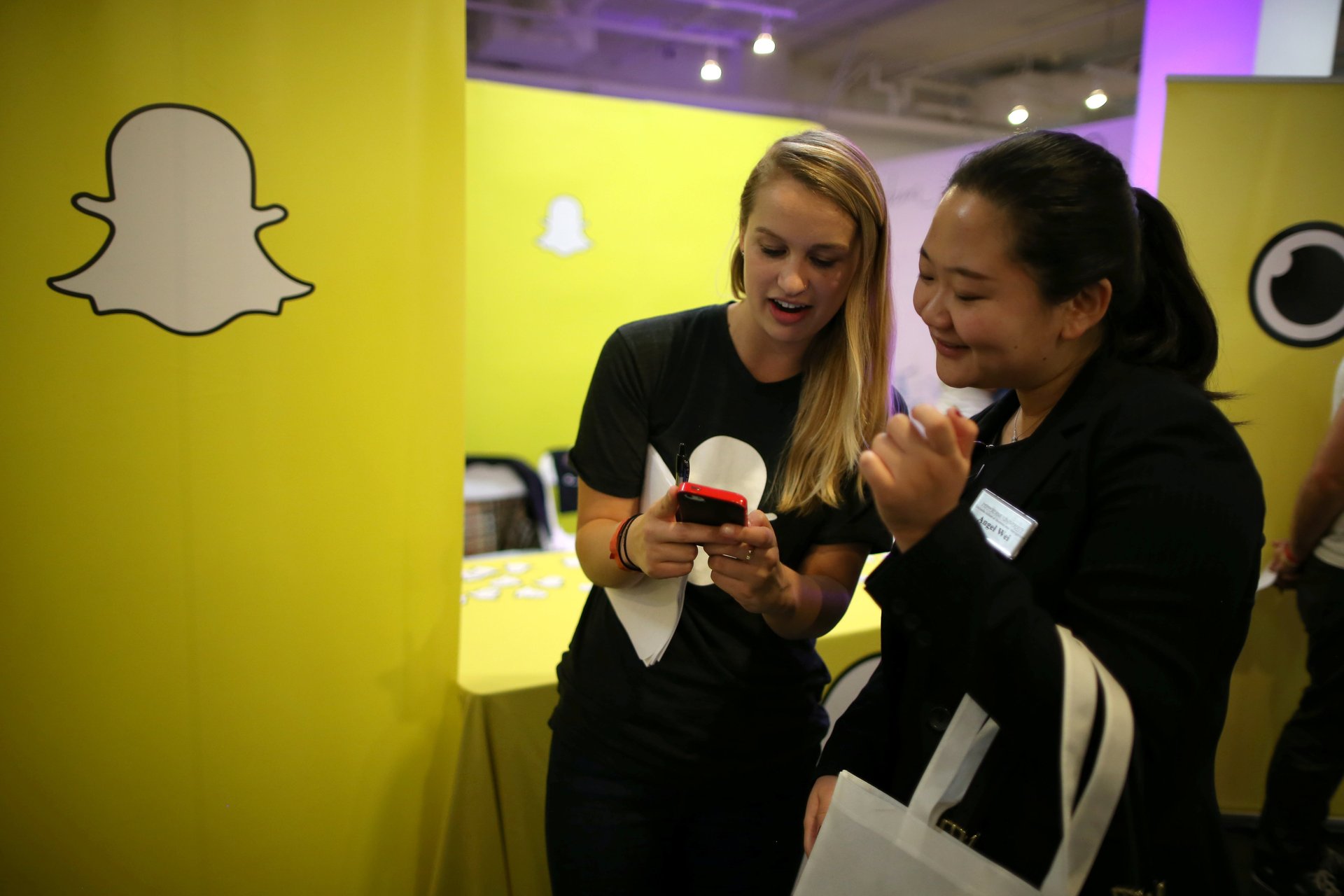Snapchat is finding new life outside the US
Following a bleak 2018, where a widely disliked redesign led to a user exodus, the company appears to have made a full recovery—and gained more new users to boot. Snap posted its third-quarter earnings report Oct. 22, which revealed that it added 7 million new daily active users. Its user base now stands at 210 million, a roughly 13% increase year-over-year. It also generated $446 million in revenue this quarter, an impressive 50% increase over the same quarter last year.


Following a bleak 2018, where a widely disliked redesign led to a user exodus, the company appears to have made a full recovery—and gained more new users to boot. Snap posted its third-quarter earnings report Oct. 22, which revealed that it added 7 million new daily active users. Its user base now stands at 210 million, a roughly 13% increase year-over-year. It also generated $446 million in revenue this quarter, an impressive 50% increase over the same quarter last year.
Of those new users, only 1 million of them hail from North America—the bulk of the new users, 5 million of them, are from new, burgeoning markets. The company attributed the gain to Snapchat’s overhauled Android app and its recent push to corner other global markets, including India and Brazil. Snapchat has seen a 40% spike in daily users in India since opening its first office in Mumbai back in August. In Brazil, Snapchat’s user base has grown by 25% since 2016, to a total of 9.3 million users according to eMarketer.
“We’ve worked hard to make Snapchat available globally so that everyone around the world can enjoy the power of visual communication,” founder and CEO Evan Spiegel said in prepared remarks.
The social media platform, primarily known for its outsized popularity with younger generations, turned eight last month. While its user base is still relatively young (52% of Snapchat users are under 25), it’s now increasingly competing with the likes of TikTok and Instagram to lasso the Gen-Z demographic. Snapchat is trying everything it can to keep them interested.
Snap unveiled a gaming platform built into Snapchat this year—which now features eight games, including the recently released Subway Surfers Airtime—but didn’t provide any information on its success on its earnings call. Games and the interactive, location-sharing Snap Map appear to be a part of a longer-term engagement strategy for the app. Spiegel referred to both gaming and maps as “medium-term” investments in prepared remarks, saying the company would work to “enhance, scale and monetize” the features over the next few years. But for the immediate future, Snapchat plans to focus on its augmented-reality features (like its popular filters) and original content.
But Snapchat is still facing an uphill battle. Even with the growing user base, it still posted a loss of over $228 million for the quarter—although that is an improvement over the $323 million loss from the same quarter a year earlier. And its competition is also getting stiffer. Instagram’s nearly three-years old Stories feature, an almost direct clone of Snapchat Stories, has roughly twice as many daily active users as Snapchat. TikTok users already have an array of AR features they can use, as well as the myriad of memes and challenges born on the app that keep people hooked. While Snapchat’s AR-enabled puppy ear filters seemed to be the height of cool in 2014, there’s now a far wider variety of tools and platforms at social media users’ disposal.